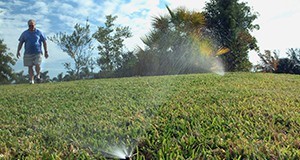Abstract
The newest article in the Encouraging Landscape Water-Conservation Behavior series, this 6-page fact sheet provides Extension professionals with information on segmenting audiences based on their home owner association status. It provides data that shows how HOA membership potentially affects the barriers that households face when adopting conservation measures and explains how Extension professionals should use this information to enhance programming by strategically planning programs based on the similarities between clients. Written by Laura A. Warner, Alexa J. Lamm, Emmett Martin, Joy N. Rumble, and Esen Momol, and published by the Department of Agricultural Education and Communication, April 2016.
References
Carswell, A. (2012). Homeowners' association. Homeowners' association.. (Vols. 1-2). (pp. 291-293). Thousand Oaks, CA: SAGE Publications Inc. doi: http://dx.doi.org/10.4135/9781452218380.n97 https://doi.org/10.4135/9781452218380.n97
Dunbar, P. M., & Dudley, C. F. (2007). The law of Florida homeowners associations: Single family subdivisions, townhouse & cluster developments, master community associations (7th ed.). Sarasota, FL: Pineapple Press.
Haley, M., Dukes, M., & Miller, G. (2007). Residential irrigation water use in Central Florida. Journal of Irrigation and Drainage Engineering, 133(5), 427-434. doi:10.1061/(ASCE)0733-9437(2007)133:5(427) https://doi.org/10.1061/(ASCE)0733-9437(2007)133:5(427)
Hansen, G., & Lewis, C. (2015). Ten strategies for working with your home owner association to convert to a Florida-friendly yard. EP513. University of Florida Institute of Food and Agricultural Sciences. Retrieved from http://edis.ifas.ufl.edu/ep513
Israel, G., & Knox, G. (2001). Reaching diverse homeowner audiences with environmental landscape programs: Comparing lawn service users and nonusers. WC044. University of Florida Institute of Food and Agricultural Sciences. Retrieved from http://edis.ifas.ufl.edu/wc044
Levy, B. S., & Sidel, V. W. (2011). Water rights and water fights: Preventing and resolving conflicts before they boil over. American Journal of Public Health, 101(5), 778-780. doi:10.2105/AJPH.2010.194670https://doi.org/10.2105/AJPH.2010.194670
Maibach, E., Leiserowitz, A., Roser-Renouf, C., & Mertz, C. K. (2011). Identifying like-minded audiences for global warming public engagement campaigns: An audience segmentation analysis and Tool Development. PLoS ONE, 6, 1-9. doi:10.1371=journal.pone.0017571https://doi.org/10.1371/journal.pone.0017571
Mathijssen, J., Janssen, M., van Bon-Martens, M., & van de Goor, I. (2012). Adolescents and alcohol: An explorative audience segmentation analysis. BMC Public Health, 12(1), 742-751. doi:10.1186/1471-2458-12-742https://doi.org/10.1186/1471-2458-12-742
Monaghan, P., Ott, E., Wilber, W., Gouldthorpe, J., & Racevskis, L. (2013). Defining audience segments for extension programming using reported water conservation practices. Journal of Extension, 51(6). Retrieved from http://www.joe.org/joe/2013december/a8.php
Monaghan, P., Warner, L., Telg, R., & Irani, T. (2014). Improving extension program development using audience segmentation. WC188. Gainesville: University of Florida Institute of Food and Agricultural Sciences. Retrieved from http://edis.ifas.ufl.edu/wc188
Newton, J., J. Newton, F., Turk, T., & T. Ewing, M. (2013). Ethical evaluation of audience segmentation in social marketing. European Journal of Marketing, 47(9), 1421-1438. doi:10.1108/EJM-09-2011-0515uf librhttps://doi.org/10.1108/EJM-09-2011-0515
Scott, J., & Marshall, G. (2009). Semantic differential. In A Dictionary of Sociology. Oxford University Press. Retrieved from http://www.oxfordreference.com/view/10.1093/acref/9780199533008.001.0001/acref-9780199533008-e-2061.https://doi.org/10.1093/acref/9780199533008.001.0001
Warner, L. A., Martin, E., Lamm, A., Rumble, J., & Cantrell, R. (2015). Encouraging landscape water conservation behaviors #1: Tailoring programs to Florida residents who use irrigation in the home landscape. Gainesville: University of Florida Institute of Food and Agricultural Sciences (AEC537). Retrieved from http://edis.ifas.ufl.edu/wc199
Warner, L. A., Rumble, J. N., Martin, E., Lamm, A. J., & Cantrell, R. A. (2015). The effect of strategic message selection on residents' intent to conserve water in the landscape. Journal of Agricultural Education, 56(4), 59-74.https://doi.org/10.5032/jae.2015.04059

